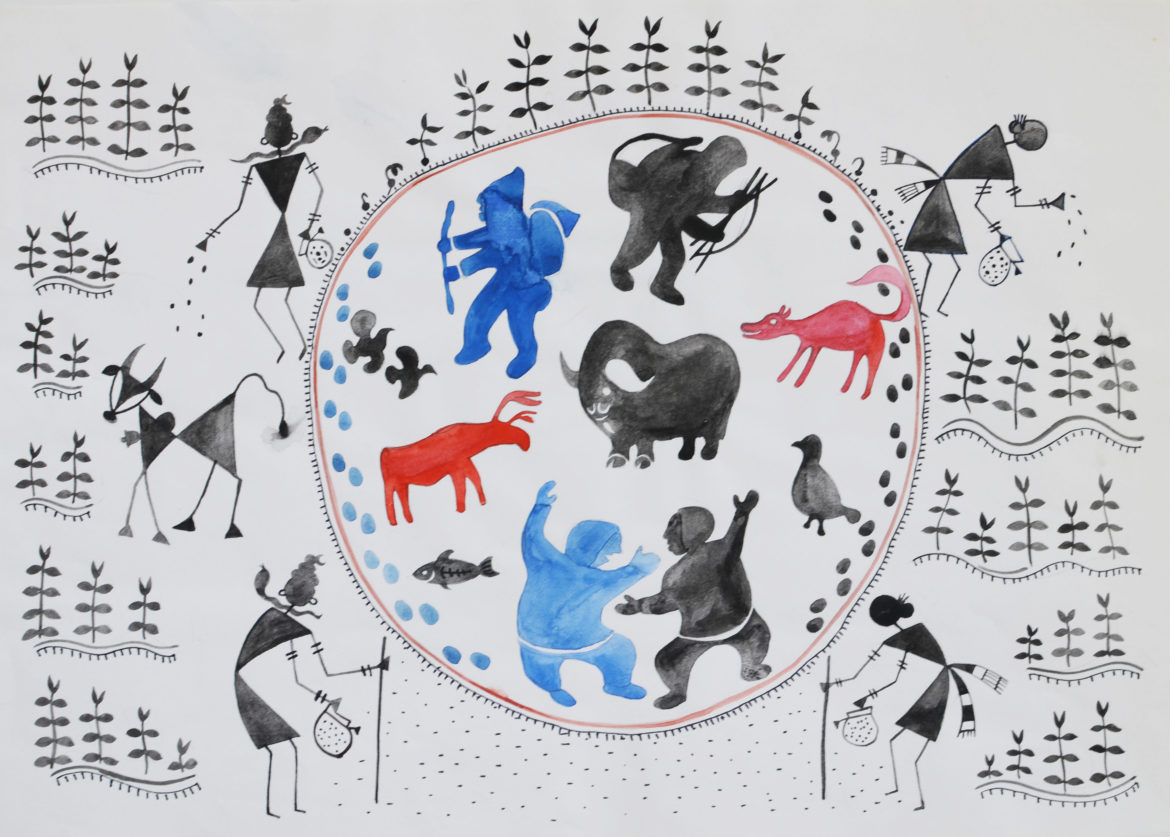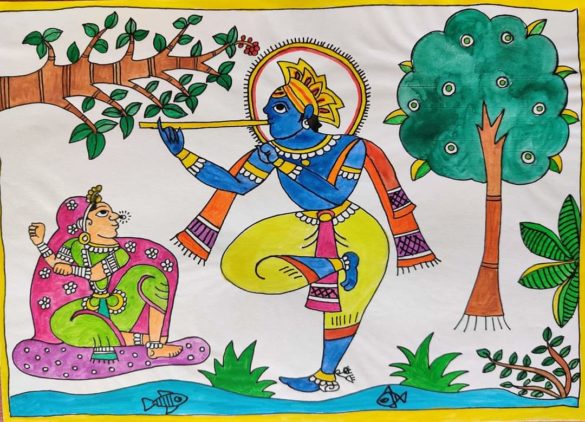All illustrations by the author
As a story researcher and storyteller, having read and told hundreds of stories from Aesop’s fables and the Arabian Nights to Panchatantra and Akbar Birbal stories, from stories of San Kanchil the mouse deer and Ananse the spider to Bere Rabbit tales, the realization that people all over the world are the same and yet different is clearly evident. When it comes to stories, I have marvelled how tales told among communities in geographically distant places may seem different but also have similarities. These tales give us one message – human beings everywhere are the same when it comes to physiology and yet are different when it comes to cultural practices, food choices and beliefs. Even though this fact is not a new one, history shows us that it has been one of the toughest realities to accept.
Our inability to be tolerant has been the reason for many bloody battles and social injustice that has happenedd and is still happening around us. Once we accept the similarities and differences amongst us, the world will appear to be a beautiful place. It is wise for us to agree, accept and embrace the differences without making judgments. Each culture has evolved due to a number of factors, geography and climate have had a big role to play in shaping those. No culture is superior or inferior to the other. They exist the way they are so as to enable their tribe to survive. Therefore it is not right for us to make judgments on the cultural aspects. Stories teach us to be kind and be tolerant. It is the need of the hour that we accept our cultural differences and work together towards the betterment of society.
I was recently part of a programme called Culture Time, where in the capacity of a storyteller, I collaborated with an artist and an art historian. We believed that art is something that binds humans together, so we decided to investigate two cultures and through art explore these, to study the similarities and differences. We looked at tribes in India and America. I researched folktales that were passed down to many generations in these tribes. I will now share two stories told at the Culture Time session.
Two Friends Who Set off to Travel the World
Once a long time ago, when there was no disease on Earth and everyone was healthy; two men decided to travel around the world so that they could tell the others in their tribe what the world is like. These two men were just married and had no children yet. They decided to take their wives along as they did not know how long it will take them to return. The men decided to make themselves cups of musk ox horn. Each of the men made himself a cup from the horn that came from the same animal. And they set out, each one going in the opposite direction taking a different route hoping to meet again someday.
They travelled with sledges keeping close to land. It took them a long time to go round the world. They had children and they grew old, and then their children had children and they grew old too until at last, the parents were so old that they could not walk. The children and grandchildren led the parents and on and on they went.
And at last one day they met. The two friends could hardly believe their eyes, they hugged each other in joy. They took out their horn cups, but alas they had used it so often that only the handles of the cups remained. So many times they had drunk water by scraping the horn cups against the frozen ice on the ground.
“The world is great indeed,” they said when they met.
They had been young when they had set out, but now they were old and led not only by their chidren but their grandchildren.
The world is great.
The First Farmers
A very long time ago, when our earth was young, it was brown, bare, and did not have even a single tree. When the wind blew, there were dust storms. The dust rose in great clouds and got into the eyes of all the animals and human beings.
Up in the heavens, the Lord with the blue neck, Shiva, and his wife Parvathi were spending a lazy day observing the happenings down on Earth. When Shiva and Parvathi saw the plight of the beings on Earth in response to the dust storm they decided to do something about it.
Parvathi went to her treasure chest and withdrew a velvet bag of treasure. In the bag were a variety of seeds. Shiva and Parvathi then took the form of an ordinary young couple and descended on Earth. They decided that each of them would go in the opposite direction and meet on the other side. And so Shiva and Parvathi each set off, scattering seeds as they went along. As they moved ahead the seeds shrew sprouted, took root and grew into bushes, creepers and trees. It took them many many many years, until one day they met at the top of a hillock.
Both the man and the woman had grown old and bent, at first they failed to recognize each other. Each stared at the other wondering who it could be, then it dawned on them. Delighted they hugged each other and looked back at their handiwork. The world was now green and verdant. The leaves and flowers and fruits were blooming. And this time when the wind blew, there was no dust storm, for the plants kept the dust firmly between their roots.
The two beautiful tales bring out how the human mind thinks. Not being exposed to different cultures make us believe that life as we know it in our own geographic and cultural bubble is the same everywhere. In both stories, characters from both cultures travelled around the world and found it to be the same everywhere. The people from the Tundra region believed the world to be exactly the same as their icy cold homes and the people from the Warli community believe the world to be lush and green as they see it around their homes in that way they are different. Both communities are right in believing that the Earth is round though, in that they are the same. Culture Time was an amazing experience where we discovered how we were different and yet the same.
In conclusion, the point I would like to state is that as we now know, the world is indeed round and people of both communities are partly right in their belief about the structure of the world but they are wrong in believing that the whole world is a replica of their homeland. We learn therefore to keep our minds open.




